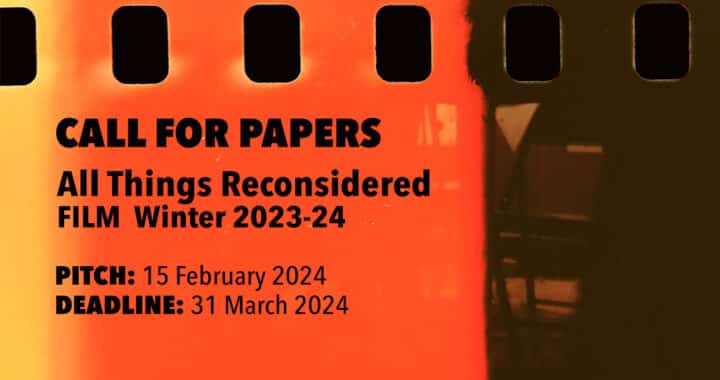We have all the toys here.
— Dwight Little, “Special Effects Toolbox: Creating Anacondas“We’re young, we’re single, we’re in Borneo.
— Ben (Nicholas Gonzalez), Anacondas
As director Dwight Little describes the snake-making for Anacondas: The Hunt for the Blood Orchid, “The development process is very complicated. It starts with just a concept… we took the beginnings from a real anaconda.” The other parts, he admits, come from boa constrictors and other snakes that offer scarier or and otherwise more compelling visuals. “We wanted it to look a little bit smarter than what an actual anaconda head looks like, and a little bit more awake and alive.”
Little’s comments in “Special Effects Toolbox: Creating Anacondas,” the sole extra save for some better-left-deleted scenes included on Sony’s DVD, focus on the updating of technology for the sequel to 1997’s surprise hit, by way of prosthetics, CGI, animatronics, and, according to visual effects supervisor Dale Duguid, “a lot of inference too” (leaves rustling, shadows). While these many tools are helpful, he adds, “The CGI is the only way we can have the speed and violence of such a massive animal in proximity to actors.” Here the interview reel cuts to an actor, namely Matthew Marsden, who plays the treacherous Jack, who testifies to the greatness of the CGI guys.
All the special doings result here in not just one snake, like the one who swallowed and spit up Jon Voight in Anaconda, but a whole slithery family of them, all looking to seize, squeeze, and eat all humans who wander into their wilds-of-Borneo territory. This slight adjustment hardly changes the plot, though: Little’s movie essentially repeats all the moves of the original, lining up a crew of ambitious young adult victims who can’t imagine what they’re getting themselves into. You, however, can well imagine, because the movie begins with a set of local hunters pursued by one of the snakes. Though the monster remains ominously unseen, the violence it does to one hunter (Khoa Do) is alarmingly visible, in the sort of disjointed point-of-view camera work, thrashing-about CGI, and smash-cut editing that characterizes such scary-movie set-ups.
Once this poor fellow is brutally eliminated, the scene cuts to New York City, where “researchers” and “executives” gnash their teeth and argue over whether the designated team of victims will go to Borneo (guess what they decide). Numbers cruncher Gordon (Morris Chestnut) and lead scientist Jack are most ardent to go find the “blood orchid,” which blooms only once every seven years and appears to be a floral version of the “fountain of youth,” promising all kinds of social, medicinal, and — most importantly — financial benefits. Opposing their bland ambition is Gail (Salli Richardson-Whitfield), a scientist who distrusts their scheme. Meantime, Jack’s former student and current assistant (“the best researcher I’ve got”), Sam (KaDee Johnson) withholds judgment.
Of course, it doesn’t matter what any of them thinks: once the head suit (Denis Arndt) hears about the likely profits (“That’d be bigger than Viagra!”), he exhorts, “Get your asses down to Borneo.” And so their fates are sealed. As Anacondas‘ slasher movie dimensions take shape, the team is expanded to include more potential victims. In country, they are joined by a cocky doctor, Ben (Nicholas Gonzalez), who comes on to Sam and so, deserves his grisly fate, and a loudly entertaining tech, Cole (Eugene Byrd, who cheated Eminem in 8 Mile), who speaks the anxiety the other feel (his running commentary is the film’s most colorful, comic, and anguished, recalling Aliens‘ Hudson [Bill Paxton]). Bad weather leaves them without options: they must seek out the orneriest captain in the seediest bar, Bill Johnson (Johnny Messner), accompanied by loyal first mate Tran (Karl Yune).
The threat emerges slowly; the camera pulls out to reveal the snake slithering by under waist-deep water, even as the group remains oblivious. They’re preoccupied: the girls are competitive (Gail assumes good girl Sam slept with Jack to get her job) and frightened (by Bill’s pet monkey Kong, by a crocodile), while the men are, by turns, wary, brash, and lascivious (Ben and Jack being the most obnoxious on this count). Cole, ever stepping to his own drummer, pays strange homage to the first film (“I knew this other guy who went to the Amazon to make a documentary, and they were all eaten by snakes!”, and Bill (who reveals that he’s in Borneo because during his military stint, in the Special Forces, he “did some things that I want to forget”) maintains his distance from these cityfolks, but soon enough, they’re all in it together, stalked by the snakes (“Everything gets eaten out here,” deadpans Bill, “It’s the jungle”).
In other words, the sequel follows Anaconda‘s plot, only here the traitor — revealed early — is one of the crew’s own, the (apparently odiously) British-accented Jack. Once the first victim is dispatched by a decently CGI-ed monster, the survivors face a growing moral tension, between the crass profiteers and whiny moralists (“Someone is dead!”), distressed by their lost acquaintances and opting for survival over wealth. They also face tribulations: they lose the boat over a waterfall, suffer leeches, blistered feet, and poisonous spiders, and dissent among the group. Even as the team is squabbling and fretting, Bill insists that, once boatless, they must bushwhack together: “This jungle is all green all the time, and you will get lost.” Jack grumbles, Cole complains, and the women — the most insightful of the crew — begin to respect one another and, not incidentally, resent the men.
So that they have something to do besides fight amongst themselves, they also keep stumbling on bodies in various states of repugnant decay (as if they need reminding of the stakes here: “What happened to him?” asks one team member when they find a regurgitated corpse, to which Bill responds, “Anaconda!” The film is at its best when it gives in to such impulses: the loopier the dialogue, the better.
While it sorely misses Jon Voight’s campy delirium (recall Sarone’s squinty-eyed declaration, “Eet wraps eetz coils around you, tighter zan any luvah!”), Anacondas does conjure up its own kind of silliness. Jack’s self-justification (“Scientists have always risked their lives”) is more mealy-mouthed than a grand vision. Everyone else pretty much does what J.Lo and Ice Cube once did so well: they run from snakes, hack at snakes, sweat and get wet. Amid all the overreaching, expensive, mostly tacky ambition of the summer’s movies, it’s good to see a B-movie that knows what it is.

![Call for Papers: All Things Reconsidered [MUSIC] May-August 2024](https://www.popmatters.com/wp-content/uploads/2024/04/all-things-reconsidered-call-music-may-2024-720x380.jpg)



